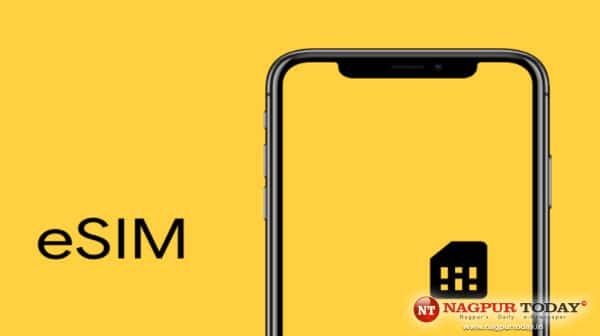The physical sim card has gone through many stages of changes in accordance with evolution of the smartphone. What started out as a full-size sim for keypad phones, the physical sim card has seen stages of mini sim, micro sim, and now nano sim. The size of the sim card has reduced significantly making nano sim, the smallest physical sim card.
Did you know that the first full size sim was rolled out in 1991 and had the size of a credit card? The mini sim was later supplied embedded as a removable small part of the full-size sim. The mini sim is often referred as a standard sim or regular sim.
Then, in 2016, we sawemergence of theeSIM or Embedded SIM. The eSIM has no size of its own because it comes embedded in your device. What is eSIM and how does it work?
Before answering the above questions, let’s first go through a small evolution journey of sim cards.
From full-size sim to eSIM: The journey
As mentioned above, the full sim card was introduced in the year 1991 by Munich-based smart card makers named Giesecke&Devrient. They sold around 300 sim cards to another Finnish wireless network company called Radiolinja.
According to the recent stats, the sim card industry made a revenue of $6.5 billion globally in 2016. It can be concluded undoubtedly that the sim card industry never looked back and has grown ever since.
Thanks to the dynamic phone manufacturing industry, our mobile phones have also evolved from heavy keypad phones to fully smart touch screen phones. To accommodate the new age features, the sim card slots, and technology was also changed accordingly.
Here are the few stages that the sim card went through over a couple of years:
The Full-Size sim
With the size of a credit card, the full-size sim is still made available as it carries linked standard, micro, and nano sim. Rolled out in 1991.
The Mini or standard sim
Supplied with a full-sized sim, it is removable and has length of just 25 mm along with width of 15 mm.
The Micro sim
The thickness is same as the mini sim. But, the length and size are reduced. It was designed to fit in devices which had sim card slots too small for a mini sim. Rolled out in 2003.
The iPhone 4 used the micro sim for the first time. Then, other companies followed suit.
The Nano sim
Thinner and smaller than other sim cards, the nano sim was rolled out in 2012. The iPhone 5 became the first phone to support a nano sim card.
Now that you have caught up on various sim cards, let’s understand what exactly an eSIM is.
What is an eSIM?
The size and thickness of a sim card are irrelevant features when it comes to an eSIM. Why? An eSIM or an embedded SIM is actually just a software which is pre-installed in a chip on your device permanently. You can register that eSIM with any carrier profile. Post which, it operates like a physical sim card.
Now the question is why was ESIM introduced? The eSIMhelps the smart phone manufacturers to save space that physical sim cards require and give them more design flexibility. Plus, the eSIM technology is more reliable and secure.
The Samsung Gear S2 Classic 3G smartwatch became the first device to support eSIM technology in 2016. The implementation was followed by Apple, Google, and other companies.
As an eSIM user, you don’t have to physically take out a sim card to change or remove your operator. You can just do so right from your device settings option. Moreover, you can assign different numbers to a single eSIM. But, you can’t use both the numbers simultaneously. So, if you are a dual sim card user, we suggest you keep one physical and one eSIM in your device.
The eSIM technology is gradually taking over the traditional physical sim card industry. Also, with the launch of 5G and IoT devices being on the rise, the eSIM technology has become more relevant. Still, only a limited devices support eSIM.
If you are planning to switch to an eSIM or take Airtel new sim card and convert the same to eSIM, make sure you have the following devices to make the switch.
Phones that support eSIM technology
Here’s a list you can refer to. Please note that there might be limitations on certain models depending on which country they are sold in. Do check with the respective stores to know more.
| iPhone | Samsung Galaxy | Google Pixel Phones | Oppo Phones | Others |
| XR | S20, S20 Ultra, and S20+ | Pixel 2, Pixel 2 XL | Find X3 Pro | Motorola Razr 2019, Razr 5G
|
| XS and XS MAX | S21, S21+5G, and S21+ Ultra 5G | Pixel 3, Pixel 3 XL, 3a, 3a XL | Reno 5A | Nuu Mobile X5
|
| 11 and 11 Pro | S22, S22+, S22 Ultra | 4, 4a, 4 XL | Reno6 Pro 5G | Gemini PDA
|
| SE 2 | Note 20, Note 20 Ultra 5G | 5, 5a | Find X5 | Rakuten Mini
|
| 12, 12 mini, 12 Pro, 12 Pro max | Fold, Z Fold2 5G, Z Fold3 5G, and Z Flip | 6 , 6 pro | Find X5 Pro | Sony Xperia 10 III Lite
|
| 13, 13 mini, 13 Pro, 13 Pro max | Huawei P40 and P40 Pro
|
|||
| SE 3 | Huawei Mate 40 Pro
|
If you are an Airtel user and want to convert your sim to an Airtel eSIM, you can do so in a few steps. Head over to the website and follow the steps to activate your eSIM today. You can also read our other blogs on eSIM activation to know the detailed process.
Conclusion
The ESIM technology is one of the newest technologies in today’s advanced cellular world. It supplements the parallel technological advancements related to 5G and IoT supported smart homes and workspaces.
It’s not too late to jump up and enjoy the benefits of an ESIM. Just go through the list of compatible phones above. Make your selection and convert your physical sim card to an eSIM in a few easy steps. You can also take an eSIM for your smart watch or iPad. Go online, do your research, and make the smart switch today!











